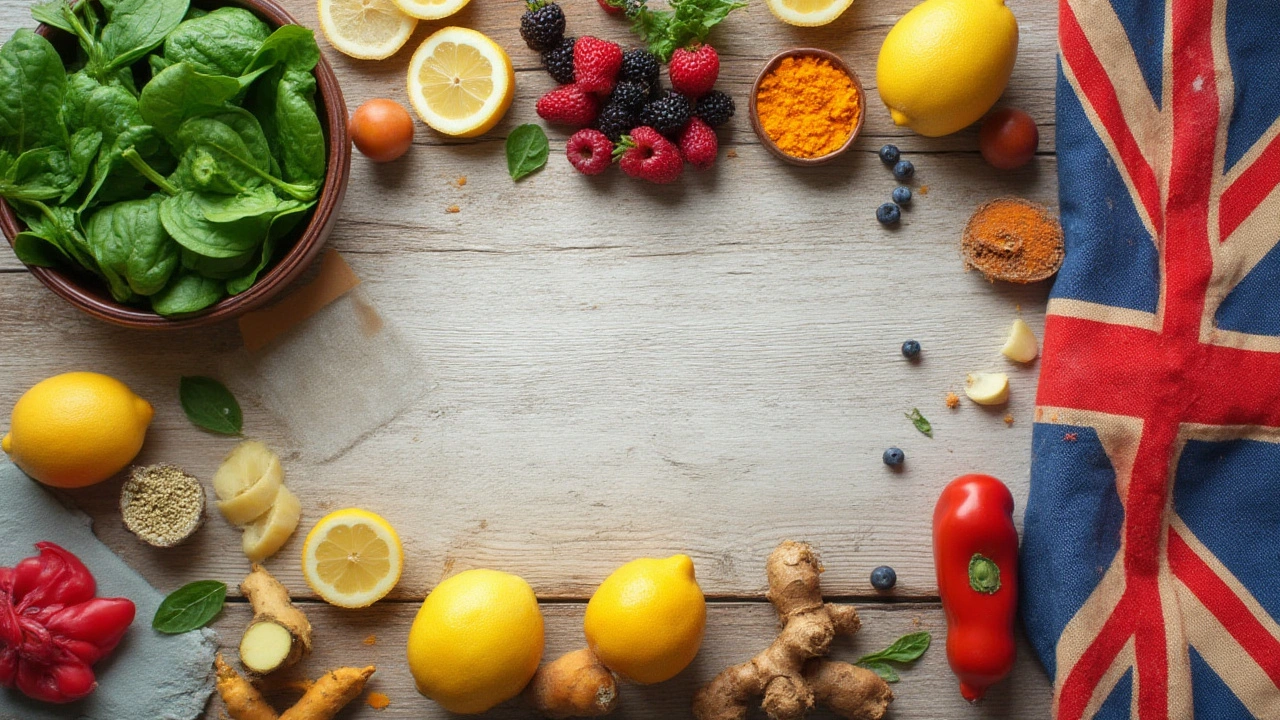Picture this: you walk past the fridge and spot a bottle that promises not just refreshment, but a whole new approach to wellness. It’s not another sugary soda or “just-for-kids” fruit punch. It’s Health Juice—blending science, nature, and a juicy burst of flavor. The world’s on a health kick right now, but not all drinks live up to their buzz. Health Juice, however, is causing noise for all the right reasons. It’s got nothing to hide, packed with ingredients your grandma would recognize, and people everywhere are swapping their regular drinks for something truly good for them. Sound idealistic? Let’s get messy with the real facts, stats, tips, and ways you can join this delicious health revolution.
Why Health Juice Is Making Headlines in Nutrition
Forget the old idea that healthy drinks are bland or bitter. Health Juice has redefined what a “wellness drink” can be. This isn’t about detox fads or a marketer’s dream—most bottles on shelves now have proof on the label: vitamins, real fruit, and a lineup of powerful natural ingredients that actually show up in nutrition studies. According to a 2024 Statista survey, over 64% of adults in the U.S. now pick drinks with “functional benefits”—like boosted energy, improved gut health, and better hydration—over old-school sodas. Health Juice rides this wave by keeping it simple and straight-up good for you.
Let’s get real about what’s inside: Health Juice blends often include cold-pressed berries, leafy greens, citrus, and clever superfoods like turmeric or ginger. None of those artificial colors or flavors. Want numbers? Grab a typical 300ml bottle, and you’ll spot things like 120% of daily Vitamin C, 3-10 grams of fiber, and zero added sugars. The nutrition truth is, your body actually absorbs nutrients better from these juices because they keep most of the fruit’s core properties intact—thanks to cold-pressing and new, gentle pasteurization techniques. That’s not just marketing; the USDA confirms that cold-pressed juice has up to 40% higher micronutrient content compared to heat-pasteurized drinks.
Here’s a look at how Health Juice stacks up in pure nutritional stats (per 300ml serving):
| Key Nutrient | Health Juice | Soda | Regular Fruit Juice |
|---|---|---|---|
| Vitamin C (% daily value) | 120% | 0% | 80% |
| Fiber (grams) | 4g | 0g | 2g |
| Added Sugar (grams) | 0g | 27g | 12g |
| Antioxidants (ORAC units) | 4200 | 120 | 3100 |
The numbers speak for themselves. Not only are you getting fewer “bad” ingredients, you’re actually getting more of what your body craves. And, let’s be honest, there’s no point in healthy hype if it doesn't taste good. Most Health Juice brands now work with chefs and dietitians to develop blends that aren’t just bearable—they’re crave-worthy. Think tangy pineapple, earthy beetroot, or spicy carrot-ginger mixes. You’re not being punished for choosing healthy anymore.
The Science Behind the Sip: What Makes Health Juice Different?
Sure, Health Juice is full of vitamins, but why does it work better than supplements or regular juice? There’s some real, science-backed reasons. Cold-pressed juicing leaves out the heat, so vitamins like C and enzymes that help you digest are kept alive. Enzymes don’t sound exciting, but they’re crucial for your metabolism—meaning Health Juice can help you get more out of your food (who says no to better energy?).
Want another angle? Check the way Health Juice uses low-glycemic fruit and fiber. Unlike regular juice or soda, Health Juice slows down your sugar absorption because it keeps more fiber from the fruit and veg. That means no sugar spikes, no shakes, no crash. The American Heart Association reported in early 2025 that swapping just one sugary drink a day for a cold-pressed juice with fiber can cut your diabetes risk by 14%. That’s insane, considering it’s just one drink.
There’s also the question of antioxidants. Forget the fancy name—it just means there are natural compounds in foods and drinks that fight damage inside your body, from pollution or stress. Blueberries, kale, carrots, and ginger are all loaded with them, and Health Juice doesn’t boil them away. A Columbia University study last spring found that participants who drank 500ml of true cold-pressed “green juice” daily saw a 21% drop in inflammation markers after 8 weeks, with most saying they felt less bloated and fatigued.
People will ask, does it matter where the ingredients come from? Actually, yes. Most leading Health Juice brands now source produce locally or regionally, meaning those nutrients haven’t spent weeks dulling down in a warehouse. Read the label—if the list of ingredients includes words you can’t pronounce, move along. The big clue you’ve got the real stuff? It usually expires within a week or two.
If you’re worried about waste—hey, we all should be—a growing number of brands are upcycling “ugly” produce (the kind stores reject) to squeeze into their drinks. It’s ethical, affordable, and good sense. Less waste for the planet, less nonsense in your body.

Sneaky Ways to Make Health Juice a Daily Habit
We all know the advice—eat more fruits and veggies, drink less junk. Easier said than done, right? But working Health Juice into your routine doesn’t have to be a boring diet chore. Forget willpower. Try these tricks to weave it into your day without breaking a sweat:
- Swap Your Afternoon Coffee: That 3 p.m. crash? Instead of reaching for coffee or a vending machine snack, go for a beetroot and orange Health Juice. Natural nitrates in beets can up your energy without the jitters.
- Mix with Sparkling Water: Love bubbles? Pour Health Juice over ice and top with sparkling water. Add fresh lime for extra zing. It’s a grown-up soda without the sugar.
- Freeze in Popsicle Molds: Kids (and adults) love popsicles. Pour Health Juice into molds, freeze overnight, and you’ve got a snack that feels like dessert, not a compromise.
- Breakfast Booster: Add Health Juice to smoothies, overnight oats, or just drink with your breakfast. Vitamin C helps you absorb more iron from breakfast grains or leafy greens.
- Portable Pick-Me-Up: Keep a mini Health Juice in your bag or fridge. It’s easier to grab that than to peel, chop, and eat an apple (and you still get all the goodness).
Don’t get sucked into “all or nothing” thinking. Even one bottle a week is a step up from zero. We’re human, not robots. And if you’re watching your wallet, look for sales or smaller, single-serve bottles—most stores now stock an affordable range alongside more expensive brands.
If whipping up your own is more your style, here’s a foolproof DIY basic health juice recipe to get you started (no fancy juicer required, just a blender and a sieve):
- 1 cup spinach or kale
- 1 green apple, cored
- 1/2 cucumber
- Half a lemon (juice only)
- One 1-inch piece of fresh ginger
- 1/2 cup cold water
If your kid hates veggies? Add a splash of Health Juice to a fruit smoothie, or freeze as mini-juice cubes and mix with applesauce for a secret boost. Get creative—no shame here!
Navigating the Health Juice Market: How to Choose the Best
The aisles are packed with “healthy” drinks, from not-so-natural sports beverages to artificially colored fruit cocktails. So, how do you spot the good stuff in the chaos?
- Check the Ingredients First: Genuine Health Juice keeps it short—real fruit, veg, herbs, maybe a touch of lemon or turmeric. If there’s anything you can’t recognize, put it back.
- No Added Sugars or Artificial Flavors: True Health Juice never lists corn syrup, “glucose-fructose,” or chemical preservatives. A touch of natural honey or maple is cool, but it shouldn’t be the first thing listed.
- Cold-Pressed or Raw: Look for these keywords. They signal the juice kept its nutrients alive. Beware of “juice drinks” or “from concentrate.” Those usually aren’t as healthy as they seem.
- Expiration Date Is Close: The real deal has a shorter shelf life. That’s because it’s not loaded with preservatives. Plan to drink within days, not months.
- Transparency in Sourcing: The best brands tell you where their produce comes from. Local, seasonal produce usually has more nutrients and helps your local economy, too.
- Responsibly Packaged: Glass or recycled materials are best if you want to cut down on plastics. Some companies even have bottle-return options or compostable packaging.
It can help to remember this quick rule: if the first three ingredients are things you’d find in your own kitchen, you’re on the right track. Don’t assume the most expensive brand is the healthiest, either—sometimes the store brand or smaller companies lead the pack on quality.
For those following special diets—vegan, keto, or gluten-free—read the label closely. Most Health Juice fits easily into these plans, but check if any extras (like added probiotics) might cause issues. Always shake well before drinking; sediment’s a sign of real produce, not a flaw!
If you love diving into creative flavors, try juice flights at local wellness cafes. It’s an easy, fun way to try spicy or herbal blends without buying a case. When in doubt, snap a photo of the ingredient label and research later—more people are building shared “good juice” lists on social media to make shopping easier.
Health Juice isn’t just a trendy wave—it’s proof that you don’t have to sacrifice taste to feel better every day. You’re not stuck with fake promises or bland, chalky “health” products anymore. When your drink is as honest as your intentions, you’re already halfway to better well-being.
